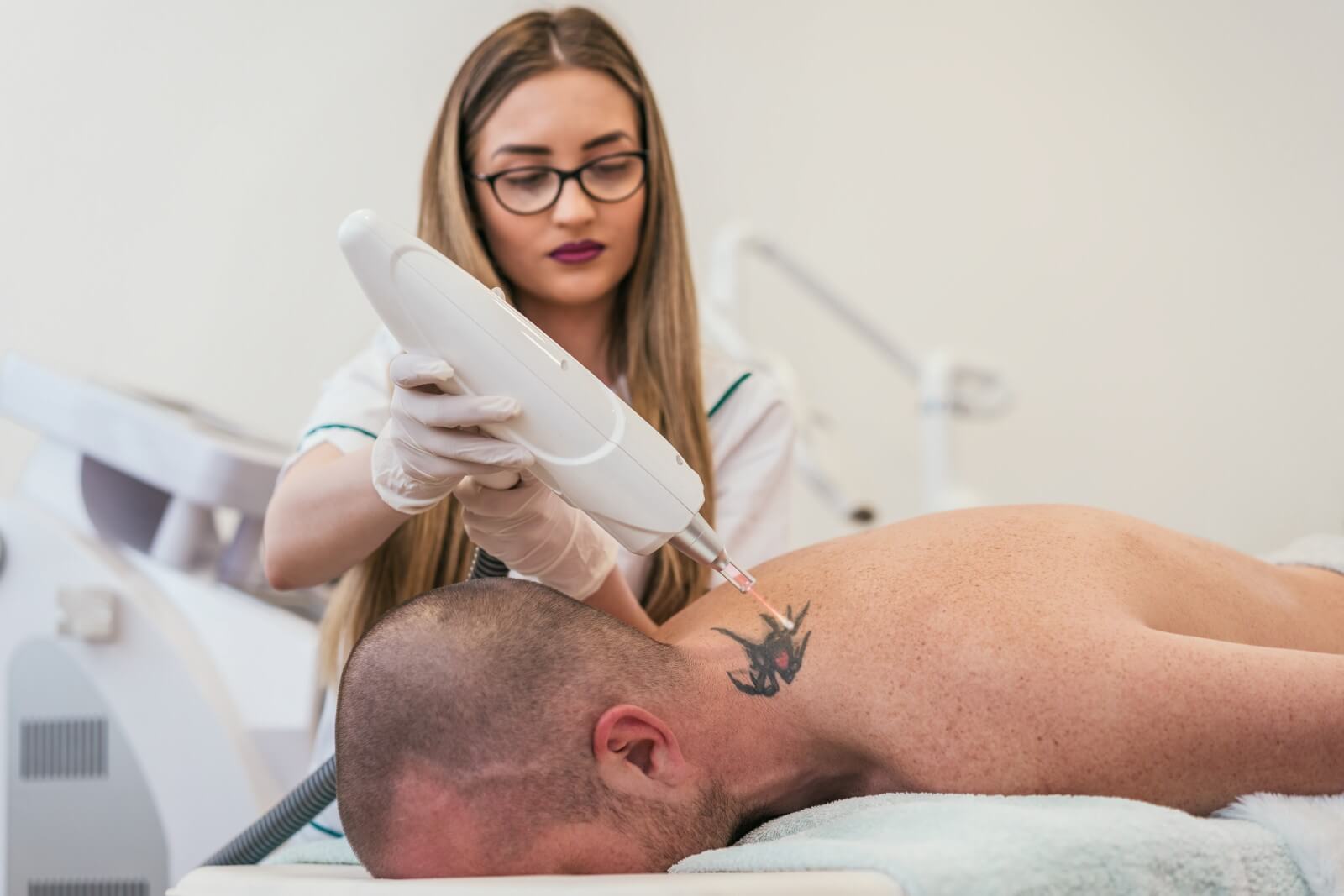5 Promotion Ideas to Help Your Tattoo Removal Business Grow
Running a tattoo removal business isn’t just about removing tattoos — it’s also about finding clients who need your business’s tattoo removal services. To do that, you need to invest time, effort, and some funds in promoting your business.
There are so many avenues for promoting your tattoo removal business. To avoid overwhelming you and your employees, we’ve come up with 5 tattoo removal promotion ideas to get you started.
If these 5 aren’t enough for you, feel free to contact OppGen for even more promotion ideas.
1. Market Your Tattoo Removal Business on Social Media Platforms
Social media marketing is simple and effective and doesn’t have to cost you a cent if you don’t want it to (though paid social media marketing is cost-effective and has very specific audience targeting options, making it well worth your while).
You can start promoting your tattoo removal business by creating business pages on Facebook and Instagram and even a YouTube channel.
Facebook business pages are free to create and manage. These pages can improve your local SEO standing because they give you a space where you can publish your tattoo removal business’s name, address, and phone number (NAP). You can (and should) include your business’s website, email address, and any other contact information that can help prospective clients find you. Plus, clients can leave reviews on your Facebook page and easily recommend and share your business with a single click.
It’s a platform that makes sharing updates and special offers easy — not to mention that once you have a Facebook business page in place, you can start creating a wide variety of advertisement types (i.e., single image posts, video, carousel, and collection ads) for both Facebook and Instagram that target specific audiences at reasonable, affordable rates.
Instagram relies heavily on visuals — photos and videos — which makes it a great option for tattoo removal businesses and services. Some people may watch tattoo removal videos because they find them interesting or even satisfying. When possible, you may want to ask your clients if you can film the procedure and provide your followers with progression updates. And don’t forget to post before and after photos!
YouTube
While Instagram is great for shorter videos, YouTube gives you the opportunity for longer tattoo removal videos. These longer videos can be cut up into parts that you can share with your Instagram and Facebook audiences.
YouTube also can help you tell your clients’ stories as they come in for each removal session. Just be sure to be mindful of HIPAA laws, which may or may not apply, depending on the kind of tattoo removal business you’re running.
A story can consist of the following:
- The client’s general background. Their age or general age range, name (consider using a nickname or a fake name), what they do for a living, etc. Make sure your client has consented to your sharing these details on YouTube and being filmed.
- The story behind their tattoo and why they want it removed.
- The tattoo’s progress with each removal.
Depending on the size of your following, it’s possible that you may be able to make revenue from YouTube advertisements, which you can funnel back into your tattoo removal business.
YouTube has paid advertising options, too, so be sure to keep that in mind as a possibility. They are mainly video-based ads, but there are different types of ads and ad placement options available for your use.
2. Attend Tattoo Conventions
Even though tattoo conventions focus more on the process of tattooing than on tattoo removal, it’s certainly not a bad idea to try to get a booth at a local tattoo convention or event to explain what you can do.
Before you go to a tattoo convention, be sure to use your social media accounts to inform your audience that you’ll be attending. If you have a booth reserved for the convention, let them know what your booth number or location is, and any other information that may be helpful.
Not sure where to find tattoo conventions? Check out the World Tattoo Events website and search local Facebook event pages to see if there are any upcoming events that are relevant or tangental to tattoo removal services.
3. Offer Free Tattoo Removal Services for Charity
Some tattoo parlors offer free cover-up tattoos for charity, so why not do something similar? You could offer free or heavily discounted tattoo removal services for low-income locals who want to get better jobs and believe getting rid of an old tattoo could help them get there. This could also be for people who are looking for work, too.
As with tattoo conventions, be sure to announce when you are offering free tattoo removals, requirements for getting a free tattoo removal, and how long you plan to offer free tattoo removal services. You could also create a Facebook event from your Facebook business page.
Don’t forget to post updates on the day of the charity event with lots of pictures and media! If you can, ask clients if you can tell their story: why they wanted their tattoo removed, how your clinic helped them, and so on.
People respond well to stories, and emotional ones that tug on heartstrings can go a long ways.
4. Sponsor a Local Event or Athlete
Unlike charity events or tattoo conventions, sponsorships don’t have to be relevant to the event or person that needs or wants them. Sponsorships are a solid way to get your tattoo removal business’s name out into the public’s view.
Local events often look for sponsors to help fund their events, so it may be worth your time to keep an eye open for those sponsorship opportunities. State fairs and art or music festivals are great places to start looking. And look into what sponsorship levels entail — in some cases, you might end up being listed on an event T-shirt or brochure. Sometimes sponsors can get their own booth or stand and put on some entertaining activities that are somewhat relevant to what they do.
Local athletes may also need or want sponsorships that can help them reach their goals (i.e., covering travel expenses to bigger events, sports supplies like golf clubs or better running shoes, special training, etc.). In terms of social media marketing, you can post your support of your sponsored athlete and share updates with how they’re doing and their progress. Drop a comment on your athlete’s social media page every so often. Cheer them on and encourage others to do the same! Just make sure you don’t flood your business’s social media accounts with just the athlete you’re sponsoring.
5. Special Deals and Discounts
You can never go wrong in offering special deals and discounts to clients. There are so many good ways to do it, too, and many of those can benefit your tattoo removal business in ways you might not have considered.
For example, you could offer a current client a discount on their next removal session in exchange for leaving a review on your business’s Facebook or Google My Business pages. Assuming you did a great job and offered top-notch customer service, you’ll probably get a five-star review and detailed praise for what you did well. Reviews are important and help prospects decide whether or not a service is worth it. Plus, five-star reviews can boost your search engine results page (SERP) ranking.
If you’re just starting your tattoo removal business, you may have to be a little tighter with your earnings at first. Rather than give every client who reviews your business a discount, you could do a raffle or drawing for a gift card to a local restaurant or shop for those reviewers. Incentives like that can help you get more reviews .
Another option is to offer holiday discounts. Check your calendar for various holidays and see if there are any that might allow for a “fun” discount theme. You could start a promotional discount for current armed service members or veterans on Memorial Day or the Fourth of July.
In all of these examples, it’s always a good idea to promote these deals and discounts on your business’s social media accounts and even invest in some paid social media advertisements ahead of time.
Grow Your Tattoo Removal Business with OppGen
OppGen Marketing has successfully generated leads for hundreds of medical segment clients, including (but certainly not limited to) tattoo removal clinics and businesses, medical spas, chiropractors, weight loss clinics, and many more with our customized digital marketing strategies. We’re only scratching the surface with these 5 promotion ideas and would be happy to discuss more marketing ideas and solutions with you.
Contact us today or fill out our free digital audit. We look forward to hearing from you soon!





